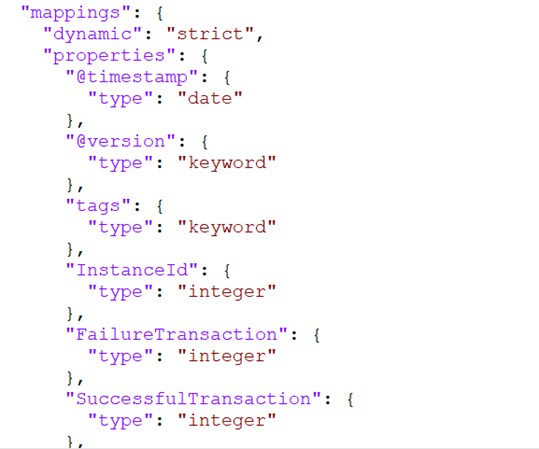Reporting
RPA Report Customization
- Identify fields/columns based on which new reports, visualizations or dashboards are to be created.
NOTE:
A field/ column can consist maximum of 400 characters.
- If identified fields/columns does not have data in the existing data, refer to Step 3 and Step 4 to get data in TxnStore else refer to Step 4 and create reports.
- Set proper data-types for the identified fields in TxnStore index mapping file on server where ELK is set up.
Navigate to logstash installation folder.
Navigate to “\config\templates” folder and open rpa-template-trans.json JSON file.
Add new fields with appropriate data-types as shown in the snapshot.
Refer https://opensearch.org/docs/latest/field-types/mappings/#dynamic-mapping-types for different field data types.

- Capture identified fields and process them in logstash and apply any other filtration or modification required if any.
Refer: https://www.elastic.co/guide/en/logstash/current/filter-plugins.html - Now you can Discover your data, create visualizations and/or dashboards on OpenSearch Dashboard using the identified fields.
Refer: https://opensearch.org/docs/latest/dashboards/dashboard/index.
|
NOTE: |
Above links may have current latest version related information, you can refer the specific version used in build. You can also change version to refer specific version information. |